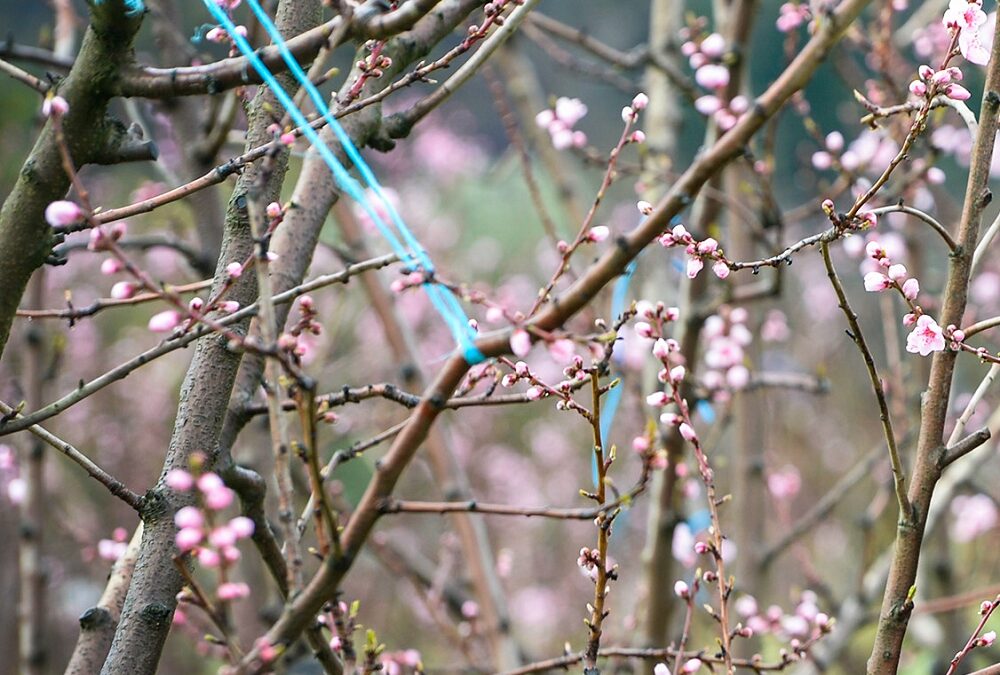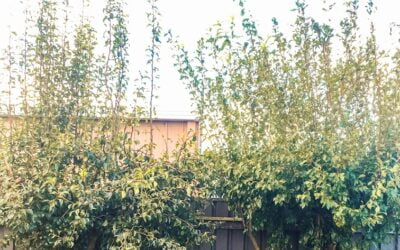Estimated reading time: 6 minutes
Training your fruit tree is not like training your dog. For a start, it’s much easier. And while animal training can take years of patience and persistence, fruit trees usually only need to be trained once.
What does it mean to train your fruit tree?
A lot of people think it refers to pruning your tree into a particular shape. That’s part of the picture, for sure.
But sometimes your tree needs a bit of extra help. This blog is about a great backup technique you can use to support your trees when pruning isn’t giving you the results you want.
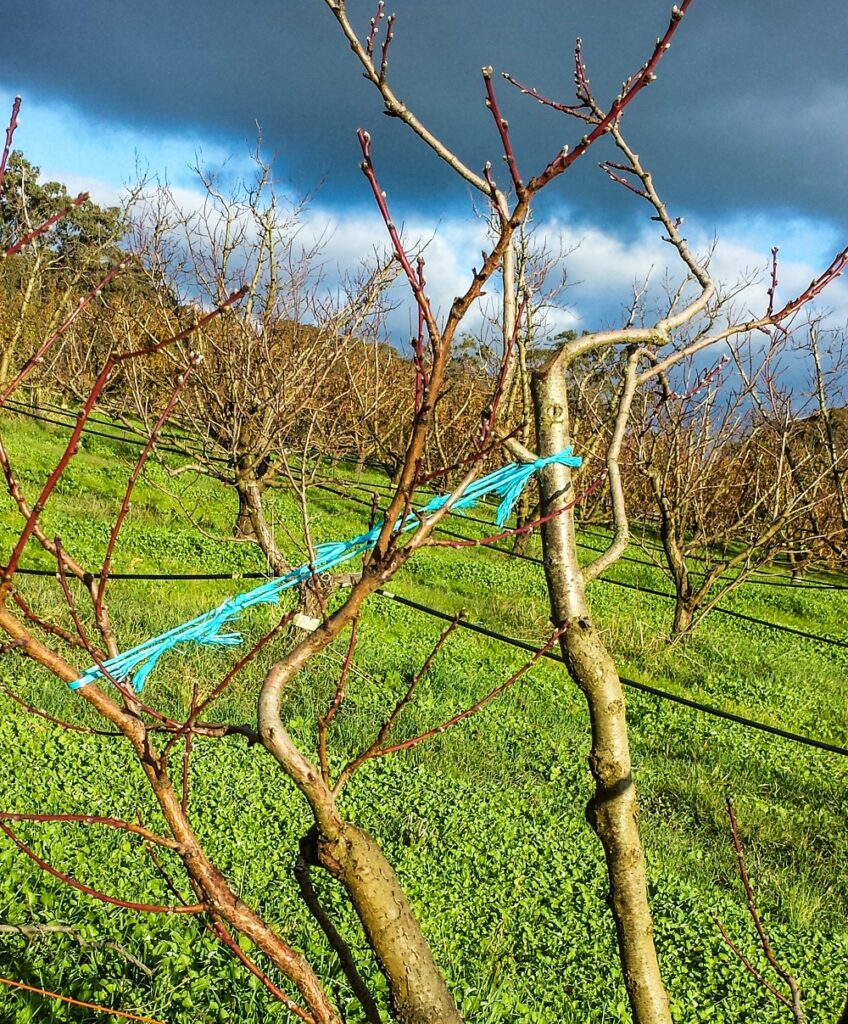
Baling twine is your friend
You’ll notice the photos in this blog all feature baling twine. If you’re not familiar with it, it’s the string that’s used to hold bales of hay together (which is why it’s also called hayband).
At our place, it’s in abundant supply. It’s also the perfect material for tying up fruit tree branches because it’s strong and lasts for years.
If you don’t have access to baling twine, you can do this technique using light rope, fabric ties, or anything else similar that you have to hand.
Creating the right framework by training your tree
Tree training is all about creating the right framework for your tree. Your tree’s structure is based on having permanent branches (also called limbs) in all the right places.
Once the branches are established, they’re usually not replaced for the lifetime of the tree. So it’s important to get them right.
In the classic ‘vase’ shape, branches are trained to be essentially vertical. They should be strong, upright, and self-supporting.
The ideal vase has between 6-10 limbs, evenly spaced around an open centre, as you can see in this photo of a mature apricot tree.
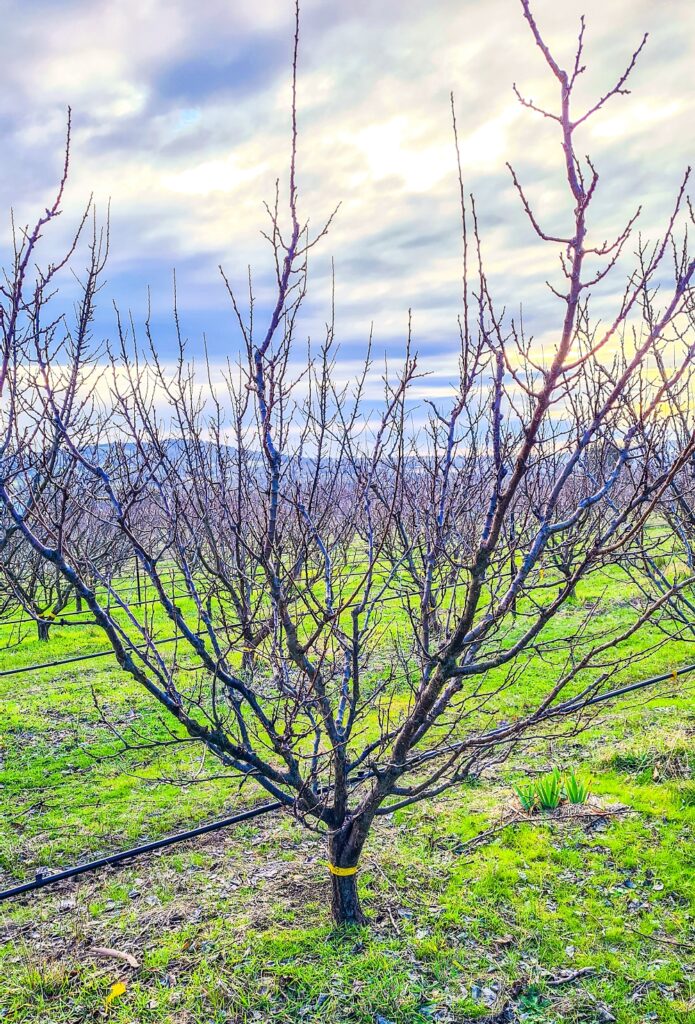
When pruning isn’t enough to train your tree
The right tree shape doesn’t always happen naturally as a result of pruning. Sometimes training your fruit tree needs something more.
Limbs may be too weak to hold themselves up in the correct vertical shape. Or they’re standing upright in winter, but you know as soon as they have fruit on them they’ll end up horizontal.
The tree’s limbs might not be quite in the right place, or pointing in the wrong direction.
This is when baling twine comes in handy. We often use it to hold limbs in the right place or to offer support to a young limb while it strengthens up.
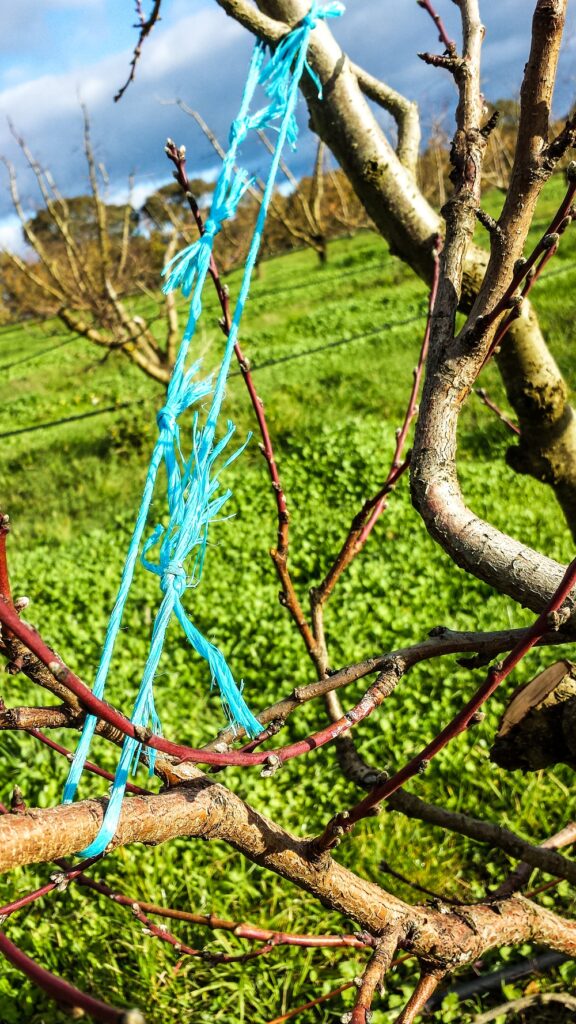
Technique matters
There are a few things to be aware of if you’re tying a weak branch to a strong branch for support.
The first is that you should never tie the twine tightly around the branch. It can quickly become too tight and strangle the branch. This then creates a weakness in the branch that can snap.
Instead, use one big loop of twine or rope that goes around two limbs that are opposite each other (e.g., the weak one that needs holding up, and a strong one on the other side of the tree).
Think of it like a strap, or a big rubber band.
It often achieves the desired result quite quickly. Review it the following year, and remove if the weak branch has become strong enough to hold itself upright. If it still needs support, leave the strap in place.
Other uses for strapping
The other main application of this technique is to help hold a broken branch in place while it heals.
In this case (below) we’ve used budding tape to hold two branches together that have split. It’s not necessarily the strongest solution for the job, but it was probably what was in our pocket when we found the break!
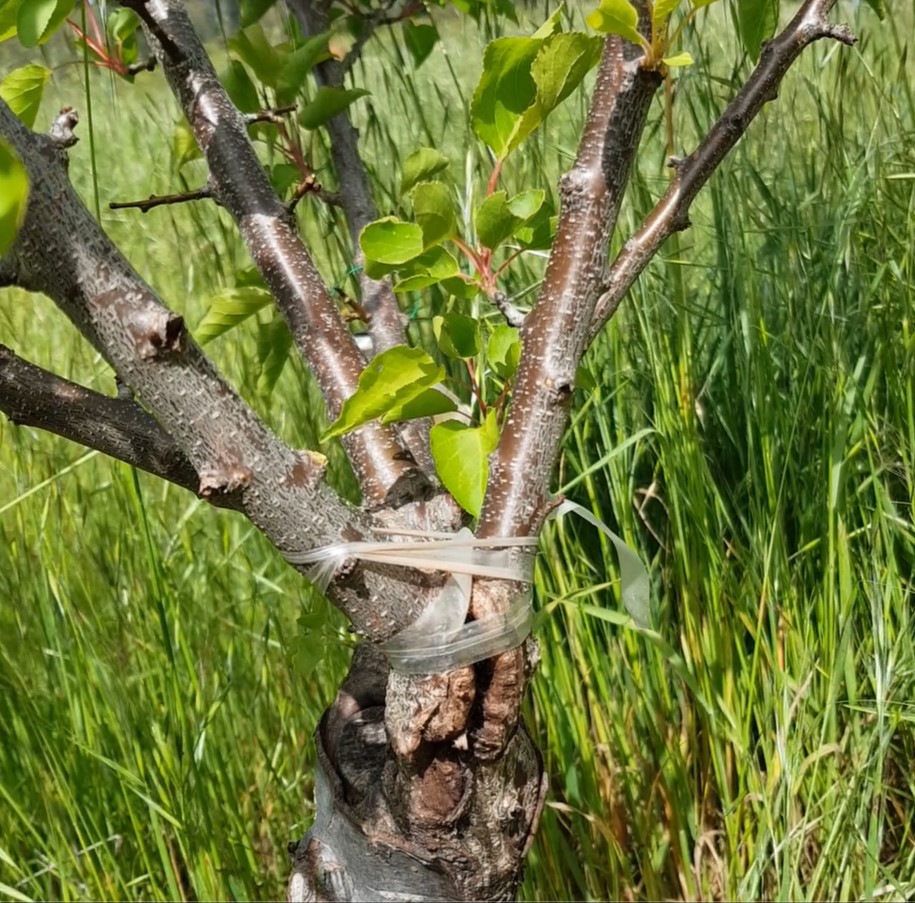
The point is, it worked. Fruit trees will usually do what you want as long as you can hold the parts in the right place for a year or two.
And no matter what material you’re using, the same principles apply. Never tie the tape directly around an individual branch, and use the strapping to hold the branches in place while they strengthen or heal.
Take extra care when training your trees
A word of caution! If you’ve strapped two branches together, be extra careful when you’re working around them during the season.
The branches that have been tied together won’t be as ‘stretchy’ as usual. It’s easier to break them when you’re pruning, thinning, or picking.
It’s quite common (and perfectly OK) to gently pull branches down or towards you to make those jobs easier. But if the branch is tied in place it can more easily snap, so extra care is needed.
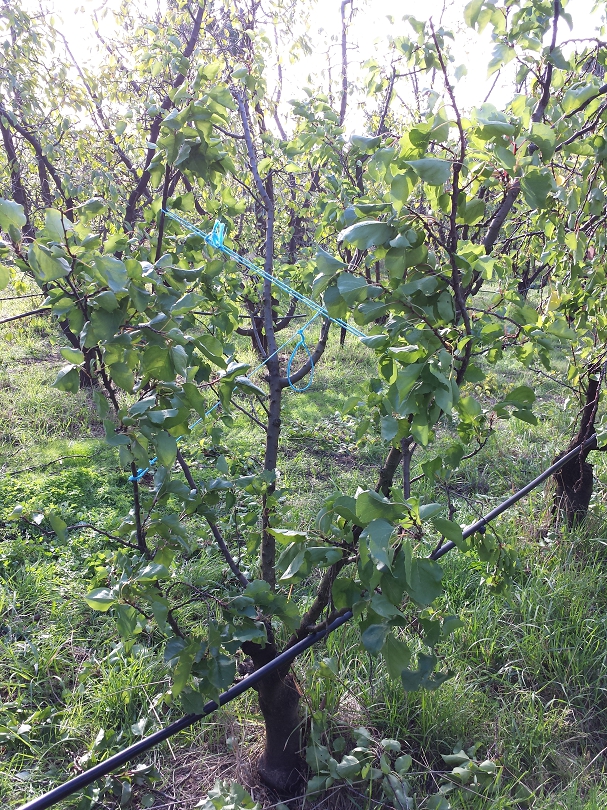
Related Articles
Taming monster fruit trees with renovation pruning
Learn how to use a technique called renovation pruning to tame large, unpruned, and out-of-control monster fruit trees.
How to plant a fruit tree – the easy way
Everything you need to know about how to plant your new fruit trees to get them off to a great start in life.
What broke my fruit tree?
Broken fruit trees can be caused by animals eating them, or accidental damage. Identifying the animal is the first step to prevention.

